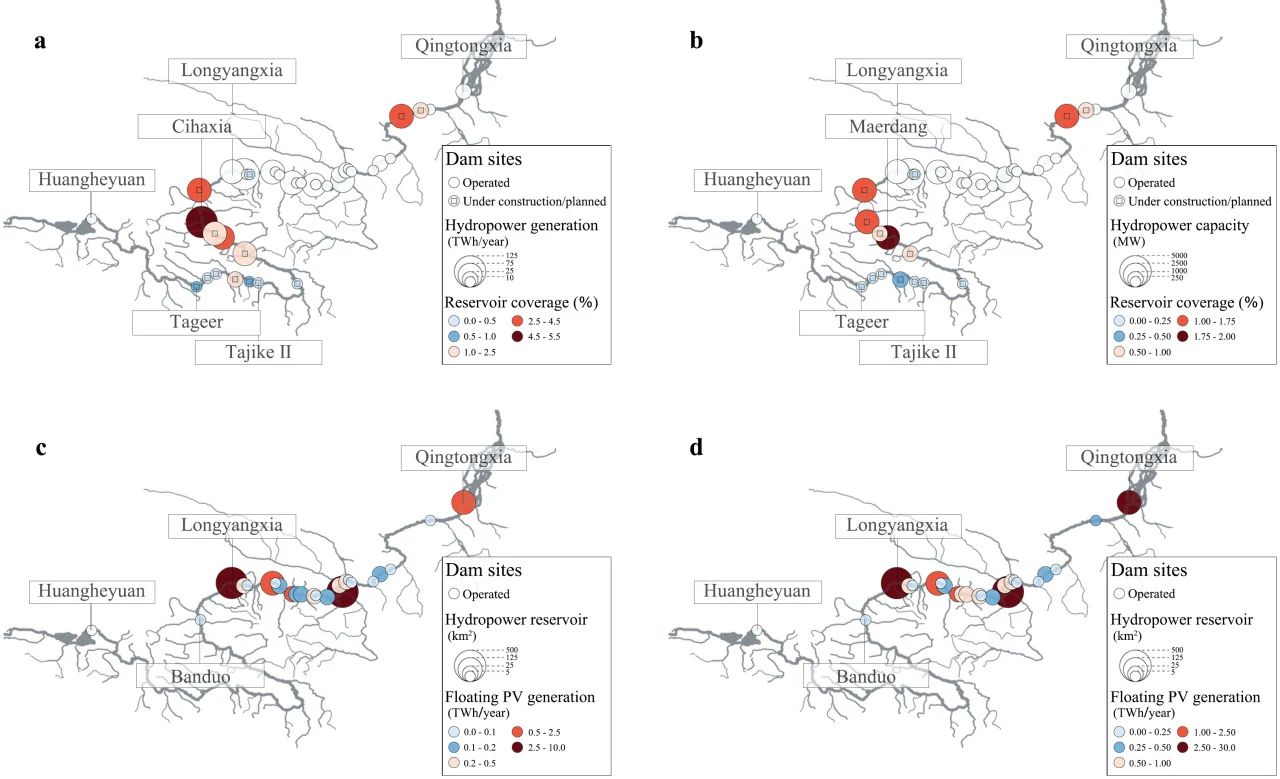Floating solar power as an alternative to hydropower expansion along China's Yellow River
An important research paper on "Floating solar power as an alternative to hydropower expansion along China's Yellow River" has been completed by a team led by Professor Chen Ruishan from the Department of Landscape Architecture in Shanghai Jiao Tong University’s School of Design. The research was published in the international academic journal "Resources, Conservation & Recycling," which covers research of the ecological environment, has an impact factor of 13.2, JCR/Q1, and belongs to highest rated portion of the SCI in the Chinese Academy of Sciences.
Hydropower development can exert irreversible negative influences on hydrology—on water resources and biodiversity of impounded rivers. Meanwhile, photovoltaic development will increasingly occupy a considerable amount of land resources, thereby causing conflicts between energy security and requirements for water and food resource security. This paper proposes a potential solution to the aforementioned contradictions: Installing floating photovoltaic infrastructure in existing hydropower station reservoirs to avoid the construction of new hydropower dams by providing an equivalent amount of energy. Taking the main stream of the upper reaches of the Yellow River in China as the study area, the feasibility of the solution is demonstrated from both technical and economic perspectives. Additionally, the land-saving benefits of the solution are quantitatively analyzed. The research results not only offer a new perspective for the trade-off between hydropower expansion and solar power generation in river basins, but also present a feasible alternative for many countries and regions that rely on hydropower expansion as an energy source.

Highlights
Floating solar power can provide an alternative to hydropower expansion.
Installing PV on 25.3% of hydropower reservoirs can replace all new dam construction.
Floating PV can also save 497.1 km² of land compared to land-based PV replacement.
Floating solar power should feature more prominently in renewable energy transitions.
Abstract
Hydropower provides a growing renewable energy source, yet remains controversial due to its environmental impacts. We demonstrate a potential solution to hydropower growth that integrates solar power and hydropower by installing floating photovoltaic (PV) infrastructure at existing hydropower reservoirs. This solution circumvents new hydro-dam construction by supplying the same amount of energy from new floating solar power installations. We simulated this solution in the upper main stream of China's Yellow River, where 15 new hydro-dams are planned. We find that installing floating PV on 25.3 % of the existing hydropower reservoirs would provide enough energy to replace all new hydro-dam construction and save 497.1 km2 of land compared to land-based PV replacement. Although floating PV as an alternative to hydropower expansion could slightly increase the initial investment (up to 9.0 %), it would avoid the adverse impacts hydropower poses to the Yellow River basin and alleviate land pressure for PV development.
Keywords: renewable energy transition, hydropower, solar power, dam construction, floating photovoltaics, ecological impacts

Fig. 1. Study area. The upper main stream of the Yellow River and the location and size of dams operated in 2022 (bluish-purple circles), under construction (red circles), and planned (white circles).

Fig. 2. Aspects of reservoir coverage and floating PV generation. (a) and (b) Reservoir coverage (%) required for installing floating PV on the 23 existing hydropower reservoirs as a generation- and capacity-based alternative to each future hydropower plant, respectively. (c) and (d) Potential generation (TWh/year) from installing floating PV with 10% and 30% of the 23 existing hydropower reservoir areas, respectively.

Fig. 3. Aspects of land savings. (a) and (b) Potential land savings (km2) from installing floating PV on the 23 existing hydropower reservoirs as a generation- and capacity-based alternative to each future hydropower plant compared to relying on land-based PV as an alternative, respectively. (c) and (d) Potential land savings (km2) from installing floating PV with 10% of the 23 existing hydropower reservoir areas covered for generation-based and capacity-based replacement, respectively.
